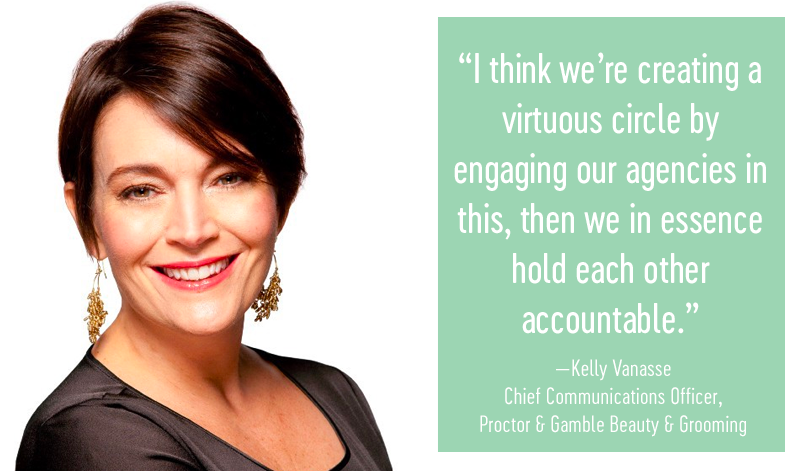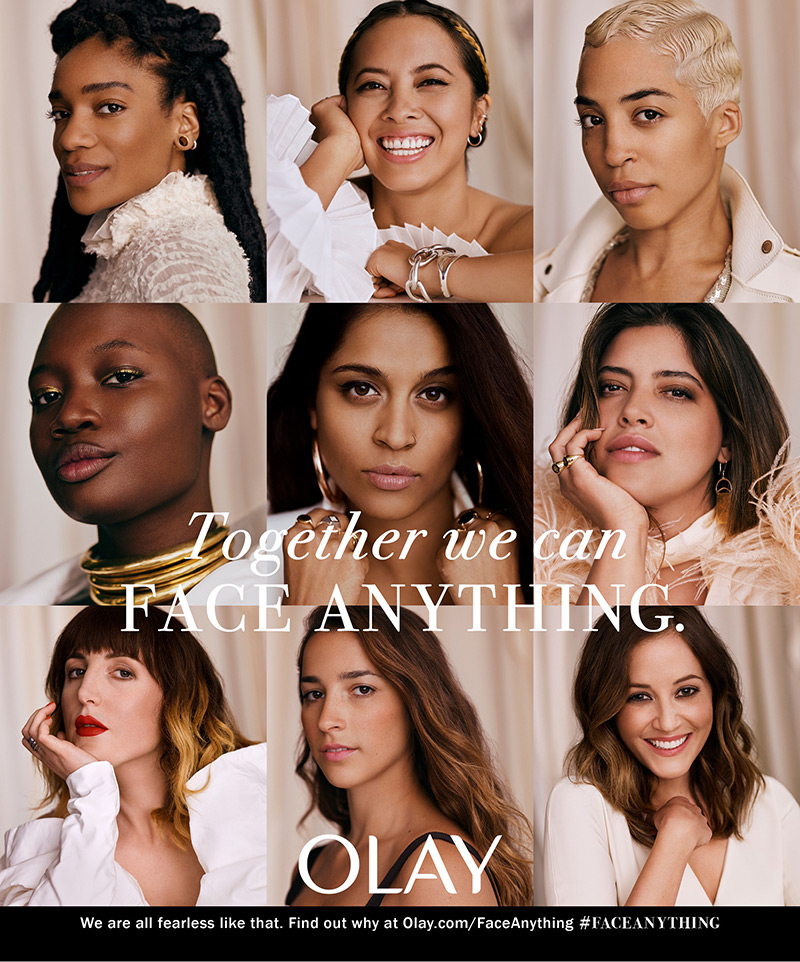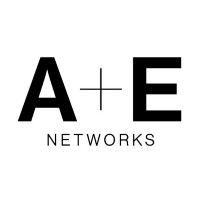

Proctor & Gamble (P&G) is the world’s largest advertiser. Its Beauty & Grooming unit is a collection of household name brands — including Pantene, Herbal Essences, Olay, Gillette and Old Spice — that together do about $20 billion in annual sales. Kelly Vanasse is the chief communication officer for P&G Beauty & Grooming. She recently spoke to SheReports about using marketing messages to empower women and using a big advertiser’s power to make change.
Your brands range from Olay to Gillette. How much of your group’s marketing is geared toward women?
The majority. It depends on which business. In our beauty business, the majority of marketing is to women. On our grooming business, the majority of our marketing is to men, but women play an important role as gifters.
How have portrayals of women shifted, both when you are speaking to women and when you are speaking to them as gifters for men?
We’ve seen an evolution. As we’ve been listening to the consumer, we’ve been understanding what’s happening in the zeitgeist as women’s empowerment and women’s equality and gender equality have become critical issues. We’re the largest advertiser in the world, and we’ve realized is that this is an area where we can make a huge difference — not just in the lives of women, but in the lives of all people, men and women, all ethnicities and backgrounds and experiences.
What are some examples of that?
Let’s use Secret as an example. Secret is “strong enough for a man, but made for a woman.” That idea of empowerment was there at the core of the brand from the very beginning, and we have maintained that over time. Today, you see an articulation in Secret’s marketing and communication around women’s empowerment. For example, our Stress Test campaign asking for a raise and with the LGBTQ-focused video about a year and a half ago. There, women’s empowerment has been core for the brand from the beginning, and you see it today. On the other hand, in the case of Always, our Like a Girl campaign was an example of us using the brand voice to shift perceptions of girls in the world.
Has joining #SeeHer led to any additional changes in what you’re doing?
We think we have a responsibility as the largest advertiser in the world to help to move forward the very public agenda of gender equality. And we realized that very few of our creative partners — creative directors, producers, directors — were women. We saw that we could make a difference with some of the largest creative shops in the world. And so in partnership with them, we’ve signed on to ensure that we increase the diversity of creatives we’re working with — more female creatives, more African American creatives. We’re leveraging our power to make a real difference.
We’re the largest advertiser in the world, and we’ve realized is that this is an area where we can make a huge difference — not just in the lives of women, but in the lives of all people, men and women, all ethnicities and backgrounds and experiences.
We think this will make a difference not just in the workplace but in the output, the communication that shows up in the marketplace. When we have people who are working on your creative, just like when we have people who are working on our brands, who are part of the audience that we want to appeal to, we have a greater chance of being even more relevant. And relevance is absolutely critical to the success of our brands.

Olay just launched their Face Anything campaign; it launched with the September issue of Vogue, a 10-page spread. It features nine women, all key influencers, very diverse. It’s the next phase of how Olay is leaning into this, and we worked with Madonna Badger on it, the chief creative officer and founder of the agency Badger & Winters. She’s been a major voice on influencing positively the imagery of women in advertising. And I think this is a great illustration of the difference that we’re seeing and the progress that we’re making.
When we have people who are working on your creative, just like when we have people who are working on our brands, who are part of the audience that we want to appeal to, we have a greater chance of being even more relevant.
Are your agency partners now on the way to actually achieving parity?
Our agencies are full partners in this. It’s good for their business, too. How far along we are? I’d say we are making very good progress and part of that is because of the commitment we’ve made through Free the Bid, the initiative to give women directors a greater voice in advertising. I think we’re creating a virtuous circle by engaging our agencies in this, that we, in essence, hold each other accountable.
#SeeHer studied 40,000 ads and media programs and found that gender-equal creative work increased trust by 10 percent and sales growth by 26 percent. It’s not only good for people but it’s good for agencies, and it’s good for the growth of the company.
More From the May Beauty Issue of SheReports:
- Insights: Women Care About Social Responsibility in Beauty Products
- Op-Ed: Treat Your Customers Like Family
- Changing Definitions of Beauty as Women Age
- Beauty with a Purpose: Thrive Causemetics
- Beauty Industry Trends Marketers Should Know
- The Impact of Micro-Influencer Marketing Is Anything but Micro
- The $18 Billon Skincare Industry Is Sparking New Enthusiasm for Science
- Skincare for a Selfie World: Rodan + Fields
- The Teen Girl AI Pipeline

